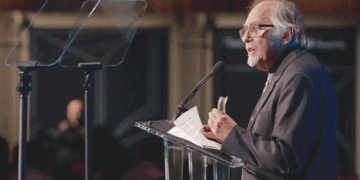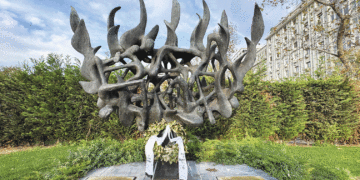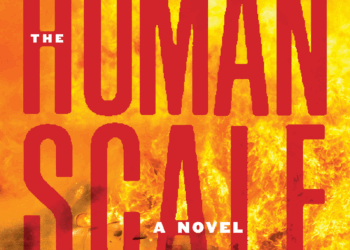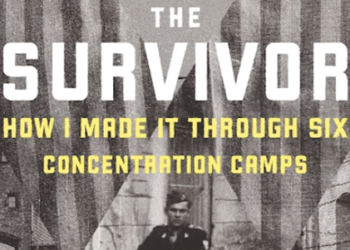50 Children: One Ordinary American Couple’s Extraordinary Rescue Mission into the Heart of Nazi Germany, by Steven Pressman, Harper, 296 pages, $26.99
Reviewed by NEAL GENDLER
Britain justly gets credit for taking in 10,000 European Jewish children between 1938 and 1940 in a project called the Kindertransport.
The United States admitted only about 1,000 unaccompanied children — and 50 of them, one in 20, were brought in by one Philadelphia couple: Gil and Eleanor Kraus.
Those were the “largest single known group of children, traveling without their parents,” legally admitted during the Shoah, says 50 Children author Steven Pressman, a journalist who earlier produced an HBO documentary on the subject.
The Krauses, Jewish socialites with two young children and not particularly observant, apparently were motivated simply by righteousness.
The idea came from Louis Levine, grand master of Gil’s fraternal group, Brith Shalom. He and Gil discussed bringing in 50 children and temporarily housing them at an unused Brith Shalom building by the group’s summer camp.
Not only did many friends try to dissuade the Krauses, calling the idea impossible or too dangerous, but their efforts were opposed by some Jewish organizations doing refugee work.
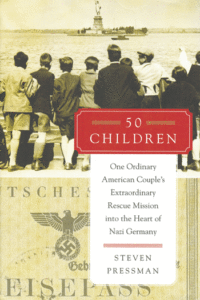
The odds were long, given U.S. rules requiring immigrants to have a U.S. sponsor of sufficient means and rigidly enforced immigration quotas designed in 1924 — partly to end the Jewish immigrant tsunami.
Gil, a successful attorney, “was a strong-willed man with a resolute sense of what was right” and iron determination to pursue it, Pressman says. While Gil manipulated government levers, aided by Philadelphia Congressman Leon Sacks, Eleanor found 54 sponsor families willing to complete voluminous paperwork disclosing intrusive personal and financial information, and to supply supporting documentation.
Sponsor affidavits completed, Gil Kraus and the family’s German-speaking pediatrician, Robert Schless, sailed for Europe April 7, 1939 — two Jews going into Nazi Germany with no protection but their U.S. passports. Told in Berlin of greater need in newly German Austria, they went to Vienna, finding hundreds of parents desperate to send their children out.
Frightened Eleanor had stayed home, but Gil became overwhelmed and sent for her on April 17. The Krauses, Schless and a local woman, Hedy Neufeld — whom widower Schless would return to marry — began interviewing children and completing their extensive German paperwork.
Physically and emotionally exhausted, the Americans and the chosen 50 left for Berlin in late May, still uncertain they’d get visas. Thanks to two righteous State Department officials, they did, and the group sailed for New York on a U.S. liner.
Gil had promised not to let the children be adopted if they could be reunited with parents, 31 of whom Brith Shalom helped bring in by June 1940. Some others survived the Shoah. Pressman interviewed surviving children. He found 19 alive and 18 deceased, and couldn’t get information about 13.
Known but maddening is the relative ease of leaving Germany (minus assets) and the enormous difficulty of getting into the United States. Germany wanted to get rid of Jews; the U.S. State Department worked to keep them out. Assistant Secretary of State Breckinridge Long proposed in a memo that consuls could be advised “to put every obstacle in the way… which would postpone and postpone and postpone” granting visas for U.S. entry.
Pressman’s easy-reading account is captivating, and a section of photos with captions gives form to the characters. Chapter-opening photo captions are camouflaged between the bibliography and the index.
Pressman says the Krauses’ rescue occurred “within the context of a profoundly hostile social and political environment in the United States that made the achievement all the more stunning — and, sadly, all the more singular.”
In an afterword, Paul Shapiro, of the U.S. Holocaust Memorial Museum, says the Kraus rescue challenges several myths about the Shoah, including “the most self-comforting and widespread myth of all, that “there was nothing we could do.” If it could have overcome its prejudices, he says, America could have done much.
Henny Wenkart, one of the 50, puts the tragedy simply: “What people don’t understand is that in the beginning, you could get out. Everyone could get out. But nobody would let us in.”
***
Neal Gendler is a Minneapolis writer and editor.
(American Jewish World, 6.6.14)


